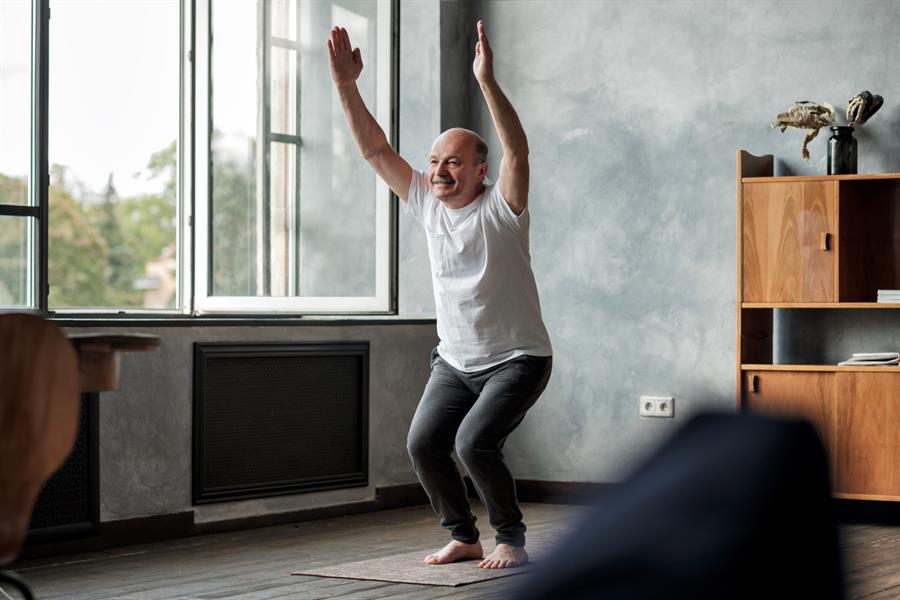Altering exercise for people with health conditions
Chronic health conditions—be it those that leave you short of breath, impair vision, or decrease balance—can make it harder to engage in physical activity. But exercises can be modified to help overcome some barriers. Research studies have found that seated exercise may improve cognition in older adults with a health condition or impairment, compared to receiving usual care or engaging in social activities. While there is still more research needed to determine the benefits for mobility and balance, the positive impact on cognition makes seated exercise a great alternative.
Recent studies have shown home-based exercise has also been effective for people with Parkinson’s disease. Exercise can be a great way to manage Parkinson’s disease, but for some, sticking to an exercise plan can be a challenge. Exercising at home may remove a few of the barriers that people face, paving the way to better health outcomes.
Exercising safely from home
Many of us often equate exercise with going to a gym, but many exercises can be performed at home with minimal equipment. Whether it be resistance band training, Pilates, or Yoga (to name a few), there are a variety of options when it comes to exercising at home. During the pandemic, the number of virtual workout class offerings has skyrocketed, making it easier to receive guidance and motivation through instructional classes. Whether you’re a beginner or a pro, be mindful of your health status, abilities, and limitations, and adjust how you engage in these activities accordingly. Starting slow is always a good strategy!
It is important to incorporate exercise, in some form, into your daily routine to age well. Whether you have a health condition, or other limitation, consider modifying exercise activities to suit your needs. As the pandemic continues, adapting our exercise routine to maintain physical activity while at home is beneficial for both our bodies and minds.





